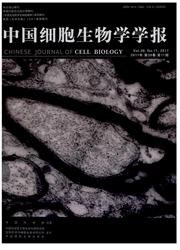

 中文摘要:
中文摘要:
肝癌是最常见的五大癌症之一,也是患者死亡的重要癌症类型之一。传统方法对治疗早期肝癌取得了一定的进展,但是癌症的复发、转移和耐药仍未得到根本解决,而这些现象可通过癌症干细胞(cancer stem cells,CSCs)理论进行解释。原发性肝癌主要包括肝细胞癌(hepatocellular carcinoma,HCC)和肝内胆管癌(intrahepatic cholangiocarcinoma,ICC),目前认为其可能部分起源于肝癌干细胞。与肝癌干细胞有关的Wnt/β-catenin、TGF-β、Notch和Hedgehog等信号通路和Ep CAM、Lin28和mi R-181等分子,在体内外调节肝癌干细胞活性,并可用以设计预防或治疗癌症的分子靶点。然而,肝癌和肝癌干细胞涉及一个复杂的发生和调节机制,存在相互干扰和冗余的信号通路,因此针对单个分子或途径的治疗效果有限。该文综述了肝癌干细胞与肝癌发生的进展及其相关的信号通路与关键分子,与针对肝癌干细胞治疗的新策略。
 英文摘要:
英文摘要:
Liver cancer is one of the five most common cancers and has become one of important types of cancer causing death. Conventional treatment for early liver cancer has made a certain progress, but cancer recurrence, metastasis and drug-resistance still occur, which may be explained by the theory of cancer stem cells(CSCs). Primary liver cancer mainly includes hepatocellular carcinoma(HCC) and intrahepatic cholangiocarcinoma(ICC), which are considered that they may derive partially from liver cancer CSCs. Wnt/β-catenin, TGF-β, Notch and Hedgehog signaling pathway, and Ep CAM, Lin28, and mi R-181 molecule are also related with liver cancer CSCs. The above can be invoked as molecular targets, and directly modulate CSCs in vivo and in vitro, and assist in designing novel strategies to prevent or treat human cancers. However, CSCs and liver cancer are involved in a complex carcinogenesis and regulatory mechanism with a mutual interference and redundant signaling pathway. Therefore, therapeutic effect is limited to a single molecule or pathway. In this paper, we review the progress of liver cancer CSCs, carcinogenesis, and the related signaling pathways and key molecules, as well as new strategies of treatment targeting liver cancer CSCs.
 同期刊论文项目
同期刊论文项目
 同项目期刊论文
同项目期刊论文
 期刊信息
期刊信息
